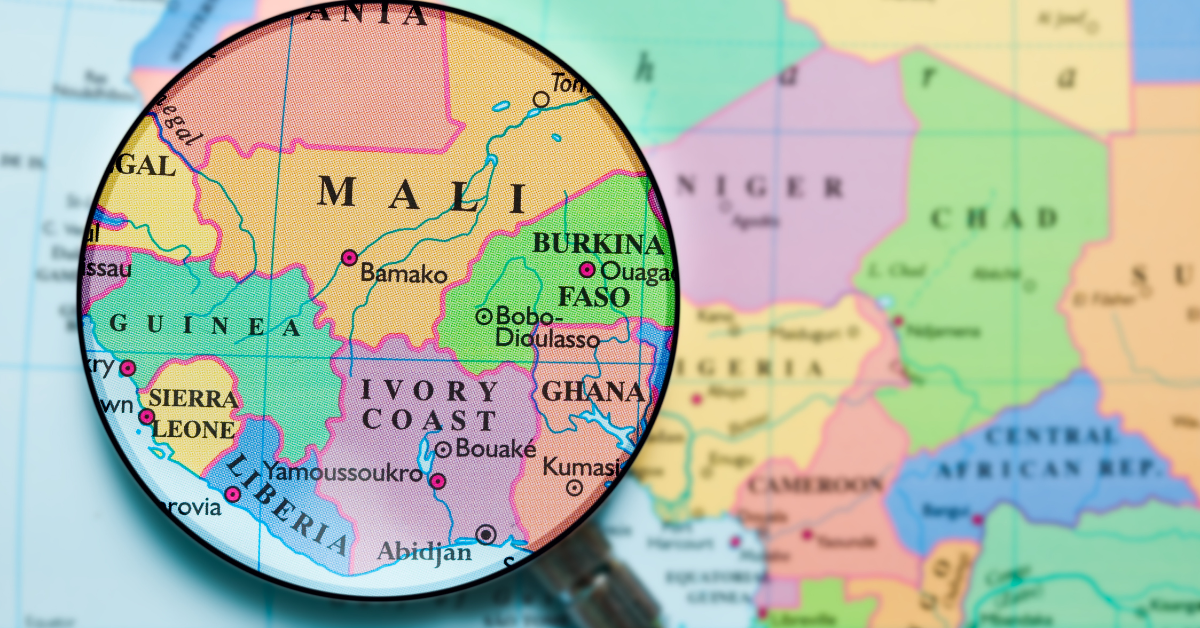In Japanese, the West African country of Mali is officially written as “馬里”. At first glance, this could be literally read as “horse village,” which may appear strange to non-native readers. However, the name does not describe the nation’s culture or geography. Instead, it reflects Japan’s historical tradition of using Kanji for phonetic transcription, a practice that continues in certain formal contexts today.
Why Mali is Written as “馬里”
The name “馬里” is a product of Kanji being used to represent sounds rather than meaning. The country’s name comes from the French word Mali, and Japanese transcribed it by choosing Kanji that contain the sounds “Ma” and “Ri.”
| Kanji | On-yomi (Sino-Japanese reading) | Represents sound | Original meaning |
|---|---|---|---|
| 馬 | Ma | The sound “Ma” | Horse, animal |
| 里 | Ri | The sound “Ri” | Village, unit of distance |
Thus, “馬里” was not chosen to mean “horse village” but to represent the sound “Mali” in Japanese. The same method was used in other country names such as “亜米利加” (America) and “仏蘭西” (France).
The Difference Between Kanji Writing and Meaning
Kanji carry intrinsic meanings: “馬” means horse, “里” means village or a unit of distance. Yet in the case of country names like “馬里,” these meanings are not relevant. Here, Kanji serve as phonetic symbols only.
For foreigners, the confusion arises from the fact that Kanji simultaneously carry sound and meaning. In alphabetic languages, letters only represent sounds. But in Japanese, Kanji strongly suggest meaning, which can mislead someone to interpret “馬里” as “horse village” instead of simply “Mali.”
| Writing | Pronunciation | Original meaning | National meaning |
|---|---|---|---|
| 馬里 | Mali | 馬 = horse, 里 = village or unit of distance | Refers to the African country Mali |
In short, the Kanji’s literal meanings are not related to the nation itself. “馬里” is simply a phonetic representation adapted into Japanese.
Why Kanji Was Used Instead of Katakana
Why use Kanji at all, instead of writing the name in Katakana as is common today? The answer lies in historical context.
- Before Katakana became widespread
In the Edo and early Meiji periods, Katakana was not yet the standard for foreign words. Official texts and dictionaries preferred Kanji-based phonetic transcription. - Influence from Chinese culture
Japan adopted many writing practices from China, including the use of Kanji to phonetically transcribe foreign place names. - Maintaining textual consistency
Newspapers and official documents of the time were written almost entirely in Kanji. Using Kanji for foreign names kept a sense of unity and readability.
| Writing method | Characteristics | Advantage |
|---|---|---|
| Kanji phonetic transcription | Represents foreign sounds with Kanji | Creates textual consistency, easier to read in full Kanji documents |
| Katakana | Represents sounds directly | Standard today, reduces confusion over meaning |
For these reasons, Kanji forms are still preserved in formal contexts such as treaties and legal documents.
Key Points for Foreigners to Understand
For foreigners trying to understand “馬里,” the following points are helpful:
- The form is phonetic rather than semantic
- Everyday Japanese typically uses Katakana “マリ,” but Kanji may appear in official documents
- Kanji carry both sound and meaning, which can cause misinterpretation
Learning this reveals much about Japan’s writing system. The flexibility of Kanji allows Japanese to integrate foreign names while preserving the flow of written text.
Comparison With Other Country Names
Mali is not unique—many other countries once had Kanji representations.
| Country (Katakana) | Kanji form | Reading | Notes |
|---|---|---|---|
| America | 亜米利加 | Amerika | Also abbreviated as 米国 |
| France | 仏蘭西 | Furansu | Abbreviated as 仏 |
| England | 英吉利 | Igirisu | Abbreviated as 英 |
| Germany | 独逸 | Doitsu | Abbreviated as 独 |
| Italy | 伊太利亜 | Itaria | Abbreviated as 伊 |
| Mali | 馬里 | Mali | Still used as official writing |
This shows that Kanji-based transcription was once standard for many countries. While Katakana has become the modern norm, Kanji names remain in use for historical and legal purposes.
The Significance for Japanese Learners
Studying the word “馬里” is valuable for learners of Japanese.
| Learning focus | Key understanding |
|---|---|
| Sound vs. meaning | Kanji combine phonetic and semantic functions |
| Historical background | Explains how Japan represented foreign names before Katakana |
| Cultural insight | Shows the influence of Chinese writing and Japan’s adaptation |
It is more than just spelling. Learning “馬里” offers a chance to experience the dual nature of Kanji and deepen appreciation of Japanese as a language shaped by history and culture.
Conclusion
Writing Mali as “馬里” in Japanese is not about describing the country’s characteristics. It is simply a phonetic rendering of the sound “Mali”. While Kanji carry meanings that may cause confusion, in this case they are used only to represent sound.
To foreigners, this may seem odd, but it is a valuable reflection of Japanese history and writing culture. For learners, understanding this highlights the duality of Kanji—both sound and meaning—and enriches appreciation of the language. Recognizing “馬里” can also spark interest in other Kanji country names and the broader history of Japanese written expression.






